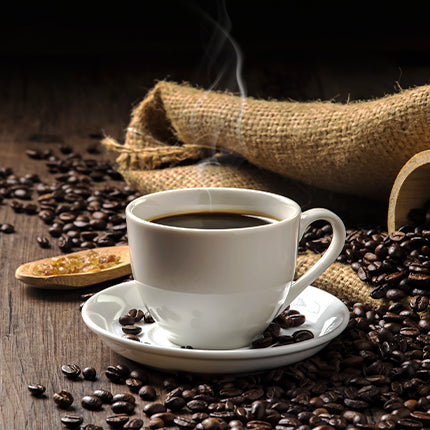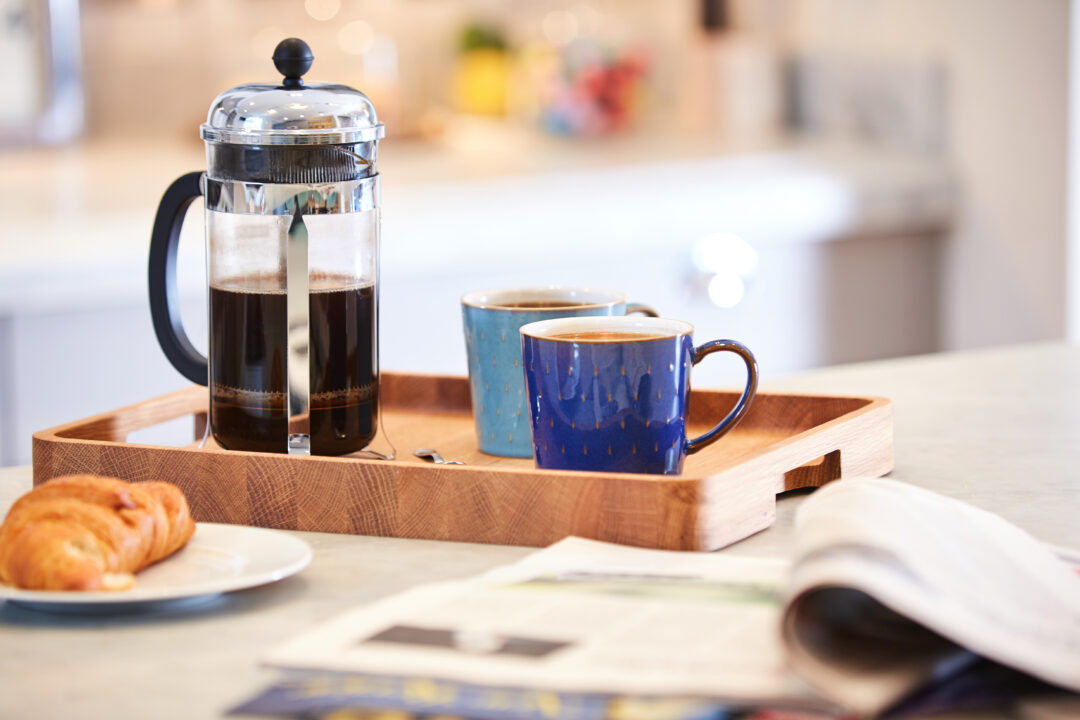The Scientific Research Behind Coffee Developing: Exactly How Temperature and Time Affect Your Beverage
Comprehending the scientific research behind coffee developing exposes that temperature and time are not simple variables yet essential aspects that dictate the beverage's taste profile and total quality. The ideal brewing temperature usually falls in between 195 ° F and 205 ° F, while the period of removal varies significantly throughout different techniques. This interplay of variables can result in a mug that is either fascinating or unsatisfactory. As we explore the nuances of these elements, the question emerges: just how can one efficiently balance temperature and time to accomplish that excellent brew?
The Chemistry of Coffee Extraction
The chemistry of coffee removal explores the intricate procedures that transform raw coffee beans into the aromatic beverage appreciated worldwide. This transformation largely involves the solubility of different compounds present in the beans, which are affected by variables such as grind size, water high quality, and the brewing approach employed.
During the brewing process, hot water serves as a solvent, drawing out soluble compounds, consisting of caffeine, sugars, acids, and lipids, from the coffee premises. Each substance contributes to the flavor account, scent, and body of the final beverage. For example, acids are in charge of zesty and brilliant notes, while oils add to an abundant mouthfeel.
The removal procedure is not uniform; various compounds liquify at various prices. The preliminary stages of developing extract acids and sugars, causing a pleasurable level of acidity, while extended extraction can bring about resentment because of over-extraction of unwanted compounds. Understanding these chemical interactions is critical for optimizing brewing techniques, as the equilibrium between extraction time and water temperature level can dramatically affect the total top quality of the coffee. Ultimately, understanding the chemistry of coffee removal is essential to attaining a all-round and tasty mug.
Suitable Brewing Temperatures
Discovering the right brewing temperature is necessary for opening the complete capacity of coffee flavors and scents - coffee brewing methods. Research study shows that the ideal array for developing coffee exists in between 195 ° F to 205 ° F(90 ° C to 96 ° C) Within this range, the extraction process efficiently dissolves the preferable soluble compounds in coffee beans, bring about a balanced and savory cup
Brewing at reduced temperature levels, such as listed below 195 ° F(90 ° C ), may cause under-extraction, yielding an acidic and weak brew with low-key tastes. Alternatively, developing at temperature levels surpassing 205 ° F(96 ° C) can cause over-extraction, creating a bitter and harsh preference due to the excessive dissolution of unwanted compounds, such as tannins.
Additionally, the excellent brewing temperature level can differ relying on the coffee bean type and roast level. As an example, lighter roasts usually gain from slightly higher temperature levels to improve their intricate taste accounts, while darker roasts may be much better suited to reduced temperatures to alleviate bitterness.
Eventually, keeping precision in brewing temperatures is essential for achieving a harmonious balance of flavors, ensuring that every cup of coffee delivers a gratifying sensory experience.
Impact of Brewing Time
Developing time plays an essential function in figuring out the flavor account and total top quality of coffee. The extraction procedure, which affects the preference, scent, and body of the beverage, is greatly dependent on exactly how long the coffee grounds are in call with water. Much shorter developing times can lead to under-extraction, bring about a sour or weak taste, as inadequate soluble compounds are dissolved. Conversely, long term brewing can cause over-extraction, helpful hints where unfavorable compounds are launched, causing an astringent or bitter preference.
Optimal developing time varies depending upon the method utilized and the work dimension of the coffee. For example, a French press commonly requires regarding four mins, while coffee extraction is normally completed within 25 to 30 secs. It is necessary to adjust developing time in conjunction with other variables, such as water temperature level and coffee-to-water proportion, to achieve the wanted taste profile.
Understanding the effect of developing time allows coffee enthusiasts to fine-tune their developing techniques, eventually improving the sensory experience of their cup (coffee brewing methods). With mindful focus to this variable, one can unlock the complete possibility of the coffee, revealing its special features and subtleties
Brewing Techniques and Their Effects

For example, techniques like French press and chilly mixture permit a much longer steeping time, leading to a fuller body and robust taste because of increased removal of oils and soluble solids. On the other hand, espresso developing makes use of high stress and a shorter removal time, generating a concentrated shot that highlights Get More Information extreme flavors and an abundant crema.
Pour-over strategies, such as Chemex or V60, offer an even more regulated removal process, allowing the brewer to control flow rate and water distribution, which can improve illumination and quality. Meanwhile, percolation techniques cycle water with the coffee grounds multiple times, leading to a more powerful, typically bitter flavor.
Last but not least, making use of paper filters versus metal filters can additionally affect the final taste; paper filters typically produce a cleaner cup by capturing oils and great bits, while metal filters permit even more oils to travel through, adding to a fuller mouthfeel - coffee brewing methods. Recognizing these subtleties can raise the coffee experience dramatically
Tips for Developing Your Brew
A well-executed mixture can change also the easiest coffee right into an impressive experience. To achieve this, focus to detail is essential. Begin with premium, freshly roasted beans, as their flavor account diminishes with time. Grind the beans just before making to maximize freshness, making sure the work dimension matches your brewing approach-- coarser for French press and finer for espresso.
Water high quality plays a vital duty; use filteringed system water devoid of pollutants. The perfect brewing temperature ranges in between 195 ° F and 205 ° F(90 ° C to 96 ° C ) As well hot can blister the coffee, while also awesome may under-extract flavors.
Timing is equally important. For immersion approaches, soaking for 3 to five minutes is optimum, whereas drip approaches normally take about five mins. Experiment with brew times to discover your recommended stamina.

Verdict
In summary, the elaborate partnership between temperature and time is extremely important in the coffee developing process. Recognizing these Check Out Your URL clinical principles empowers individuals to refine their developing strategies, inevitably leading to an extra enjoyable and balanced coffee experience.
Recognizing the science behind coffee brewing exposes that temperature and time are not mere variables but essential aspects that determine the drink's flavor profile and general high quality. Recognizing these chemical communications is important for enhancing brewing methods, as the equilibrium between removal time and water temperature can substantially influence the general top quality of the coffee.Brewing time plays an essential role in determining the flavor account and general high quality of coffee. By concentrating on these elements-- bean quality, grind size, water temperature, steeping time, and proportion-- you can raise your coffee developing procedure, resulting in a consistently exceptional mug.
In recap, the elaborate partnership in between temperature and time is vital in the coffee developing procedure.